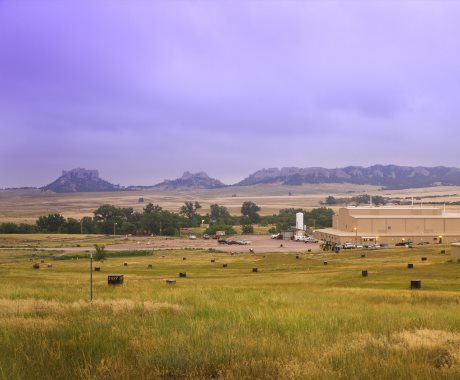Cameco considers future of US operations
09 March 2017
Cameco has confirmed it is evaluating the possibility of divesting its US uranium facilities, although no decision has yet been made to sell any assets. The company's combined operations at Smith Ranch-Highland in Wyoming is the largest uranium production facility in the USA.
 |
| ISL operations at Crow Butte (Image: Cameco) |
As well as Smith Ranch-Highland, Cameco also operates the Crow Butte facility in Nebraska. Both employ in-situ leach (ISL) methods, which circulate solutions through ore-bearing formations to dissolve uranium and pump it to the surface for recovery. This results in minimal surface disturbance and produces no waste rock or mill tailings. Once operations are complete in a wellfield, groundwater is restored to meet regulatory standards.
Cameco spokesman Gord Struthers said the company was at an "early stage" in the process and there was no target date for a decision. "Together, our US facilities have capacity to produce up to 7.5 million pounds a year and hold 93 million pounds of reserves and resources. In a different uranium market, it would be very attractive," he said.
Cameco is no longer developing new well-fields at either facility since its April 2016 announcement of plans to curtail production at its US operations in response to market conditions. At the same time, it suspended uranium production at the Rabbit Lake uranium mine in northern Saskatchewan and reduced production at the McArthur River/Key Lake operation, also in Saskatchewan. The company has instead focused on its "tier 1" assets of McArthur River and Cigar Lake in Canada and Inkai in Kazakshtan.
Struthers told World Nuclear News that owing to the nature of in-situ leach mining and wellfield restoration requirements, production at Smith Ranch-Highland and at Crow Butte is expected to continue, but at a decreasing rate over time as head grade and flow rate decline. "In 2017, we expect to produce 0.4 million pounds (154 tU) at Smith Ranch-Highland and 0.1 million pounds at Crow Butte," he said. Smith Ranch-Highland produced 0.9 million pounds U3O8 in 2016, while Crow Butte produced 0.2 million pounds. Total US uranium production for the year was 2.9 million pounds U3O8, according to preliminary figures from the US Energy Information Administration.
Speaking at the BMO Capital Markets 26th Global Metals and Mining Conference in Florida on 28 February, Cameco CEO Tim Gitzel said market conditions in 2016 were "probably about the most difficult I've seen in almost 30 years" although he remained "optimistic" at the growth in reactor construction around the world, leading to more uranium consumption. "[W]e're positioning ourselves to be ready to take some of that demand. We have our strategy today focused on our tier one low cost assets that provide us with the most value," he said.
Earlier this week, Gitzel said the company was seeking clarity on the US Administration's plans for nuclear power, especially the views of newly sworn-in Energy Secretary Rick Perry. A possible border tax on imported commodities could make US-based production more "valuable", he said.
Researched and written
by World Nuclear News